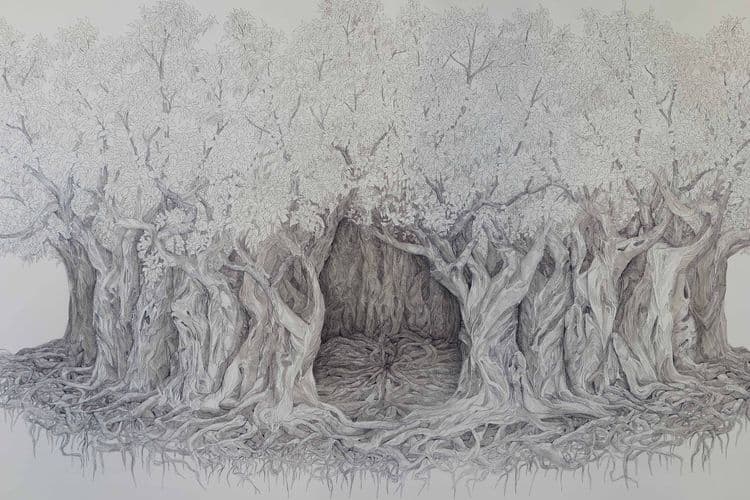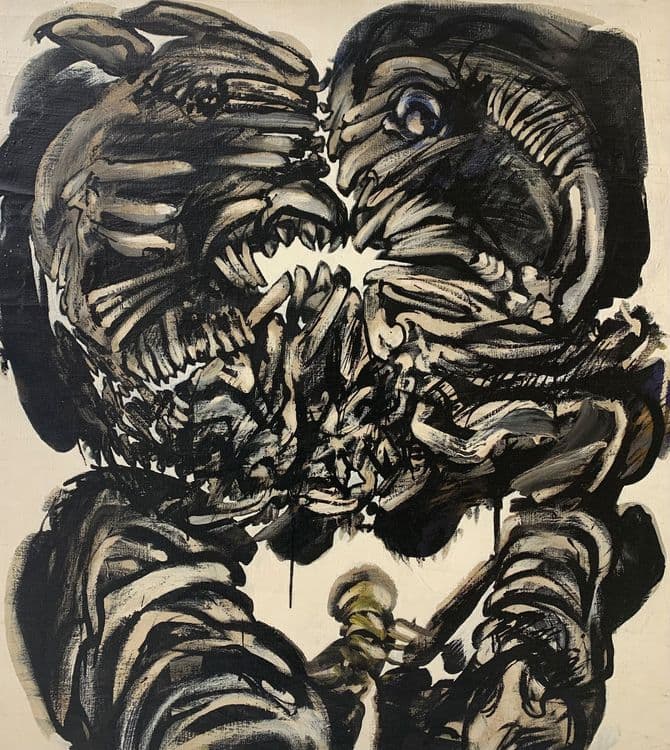
Seçil Büyükkan
Eskişehir, b.1984

Eskişehir, b.1984
Seçil Büyükkan (b.1984, Eskişehir) graduated Eskişehir Anadolu High School of Fine Arts (Painting) in 2002 and Anadolu University Faculty of Fine Arts Printmaking Department in 2007. In 2006, she received 6 months of fine arts education at Akademia Sztuk Pieknych we Wrocławiu (Poland) with Erasmus Program. Seçil Büyükkan completed masters degree in Gazi University Fine Arts Institute Paiting Department in 2017.

In the exhibition of Seçil Büyükkan, trees with roots that are far away from the ground become communities that can exist on their own. Reasons that gain independence from their sources act as resources for each other. Each different scenario can be read by its two aspects; first, trees that drift away from the ground and are composed of organic forms seem like they disperse their mundane self and form their own worlds/planets in the void. Then, these compositions made with trees rejoin with abstract feminine forms. These trees that gain independence from their roots and that create prejudice in someone who sees them as being dead preserve their aliveness with a state of being together that converts them into resources.
SEE MORE

This exhibition focuses on speculative realities that are deemed unreal because we do not experience them in the "here and now," positioned on the boundary between what is real and what is not. Although the works have different facets, they attempt to gather pieces that can relate to each other under one umbrella, in relation to the changes in the perception of given reality. This reality is based on assumptions that what is considered “real” can be reembodied. Gerçekte Olmayan Şeylerin Zihinsel Tahayyülleri is an extension of thought processes that lead to different possibilities, such as post-humanism and new materialism, which emerged in the 21st century following the human-centered thinking of humanism and the unwavering faith in human reason of the Enlightenment.
SEE MORE